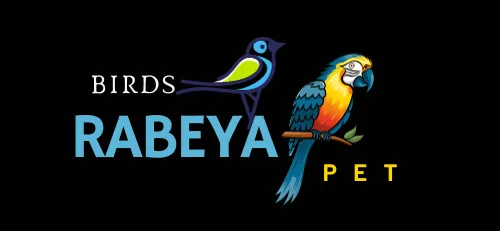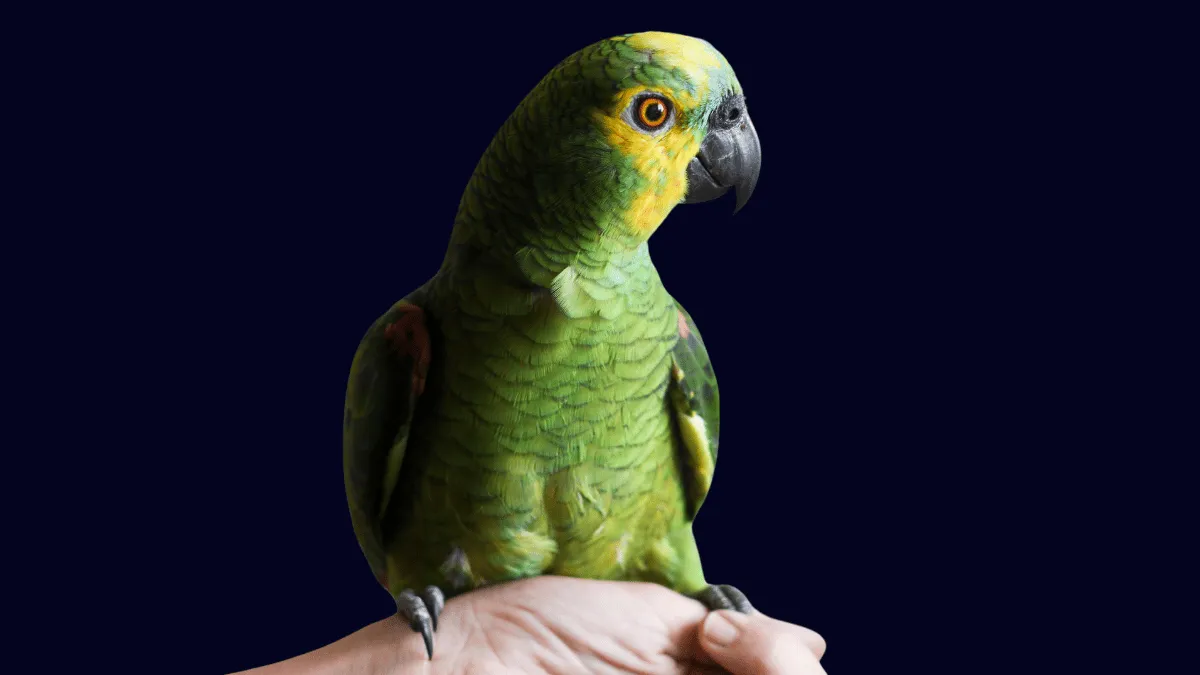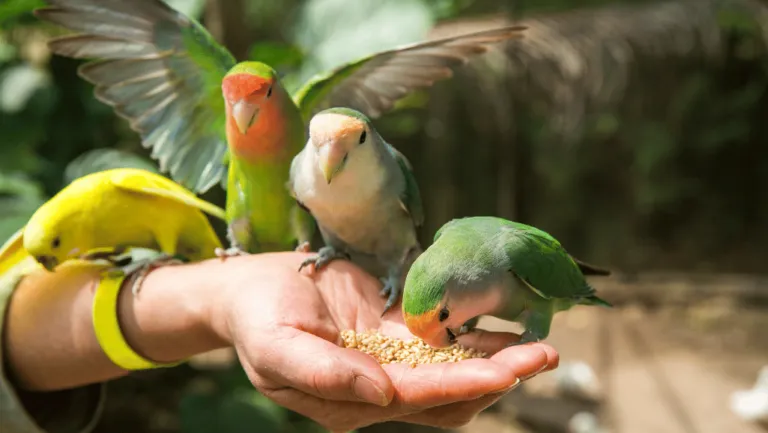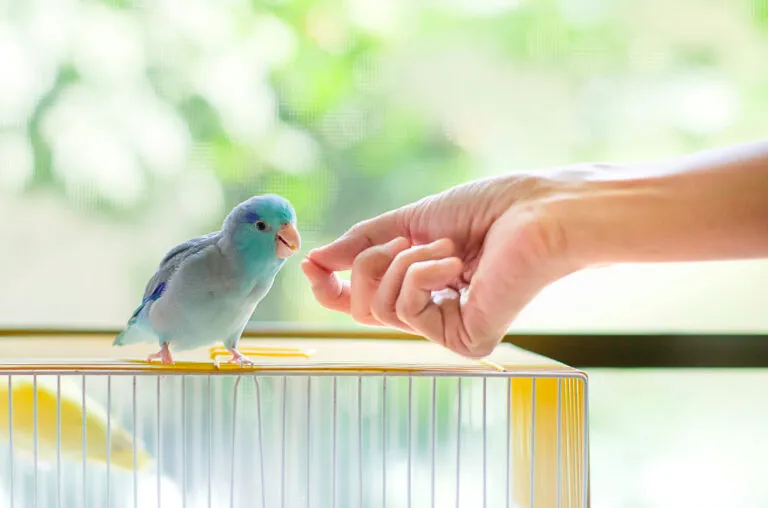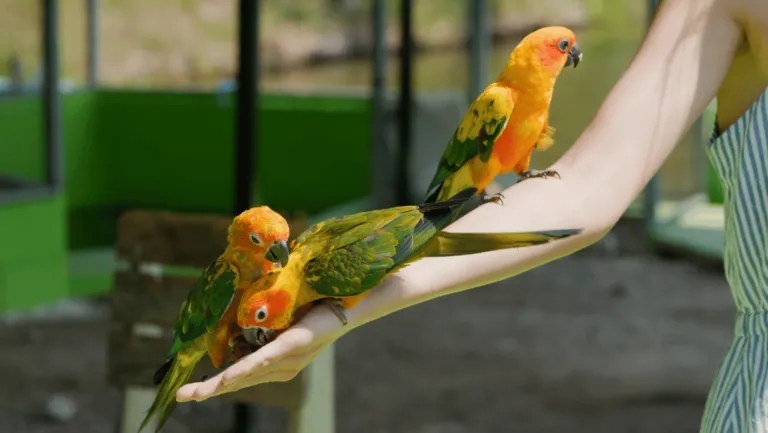Birds are fascinating creatures that have evolved unique and complex methods of communication. Through a combination of sounds, visual cues, and even chemical signals, birds are able to convey messages, establish social bonds, and navigate their environments. By studying bird behavior and vocalizations, scientists gain valuable insights into the intricate world of avian communication.
Key Takeaways
- Birds use a variety of methods to communicate, including sounds, visual displays, and chemical signals.
- Studying bird communication helps us understand how birds survive, interact, and form social bonds.
- Vocal communication, such as bird songs and calls, is essential for territorial defense and attracting mates.
- Visual communication involves using plumage, postures, and gestures to convey messages.
- Chemical signals and tactile communication are also used by some birds to strengthen bonds within pairs or flocks.
Overview of Bird Communication
Birds are fascinating creatures that have developed intricate methods of communication to interact with their fellow aviators. Through a combination of bird sounds and visual communication, birds convey important messages, establish territories, attract mates, and warn of potential dangers.
One of the most remarkable aspects of bird communication is their extensive repertoire of bird sounds. Some species, such as the Brown Thrasher and the Nightingale, are capable of producing over a thousand different sounds. These melodic, rhythmic, and sometimes complex vocalizations serve various purposes, including mate attraction, territorial defense, and flock coordination.
Visual communication is another prominent aspect of avian communication. Birds utilize various visual cues and displays to convey their intentions and emotions to other birds. From posturing and wing displays to fluffing their feathers, these visual signals play a vital role in courtship rituals, establishing dominance, and deterring potential predators.
Birds employ an array of visual cues to communicate their intentions to potential mates and rivals. These visual displays are often accompanied by unique body postures, such as head-bobbing or wing-shaking, enhancing the effectiveness of their messages.
“Birds use both vocal and visual cues to communicate effectively with their peers, mates, and competitors,” explains Dr. Jane Peterson, an ornithologist at BirdLife International.
“While bird sounds carry across distances, visual cues provide immediate signals to nearby avian observers. These combined methods enable birds to communicate efficiently and adapt to their ever-changing environments.”
Understanding the complexity of bird communication is crucial for ornithologists and bird enthusiasts alike. By unraveling the meanings behind the diverse array of bird sounds and visual displays, scientists can gain valuable insights into bird behavior, social structures, and evolutionary processes.
| Bird Communication Types | Examples |
|---|---|
| Vocal Communication | Songs, calls, and vocalizations |
| Visual Communication | Posturing, feather displays, and gestures |
| Chemical Communication | Scents and pheromones |
The Significance of Studying Bird Communication
Understanding bird communication plays a vital role in unraveling the mysteries of how birds survive, interact with their own species and other wildlife, and navigate their natural habitats. Communication is an essential aspect of bird survival, enabling them to warn each other about potential threats and find mates during the breeding season. By delving into the intricacies of bird communication, we gain valuable insights that help protect and conserve bird populations and the ecosystems they inhabit.
Bird Communication and Survival
Birds rely on various forms of communication, including vocalizations, to ensure their survival. Alarm calls, for example, allow birds to quickly alert their flock members about potential dangers, helping them stay safe and secure in their environments. Through the exchange of vocal signals, birds are able to establish their territories, attract mates, and maintain social bonds.
Interaction and Ecosystems
Bird communication also facilitates interaction, not only within their own species but also with other wildlife in their ecosystems. By understanding the language of birds, scientists can decipher the complex web of relationships and interactions that exist in these natural habitats. This knowledge is crucial for comprehending the dynamics of ecosystems and ensuring their preservation for the benefit of all species.
Protection and Conservation Efforts
Studying bird communication provides valuable information that aids in the protection and conservation of bird populations. By understanding their vocalizations, behaviors, and social structures, conservationists can develop effective strategies to mitigate threats and preserve birds’ natural habitats. This knowledge allows us to implement measures that promote the long-term survival and well-being of birds, contributing to the overall health and sustainability of ecosystems.
| Benefit | Insight |
|---|---|
| Understanding Bird Behavior | Provides insights into survival strategies and social interactions |
| Promoting Conservation | Leads to effective protection efforts and the preservation of ecosystems |
| Ecosystem Health | Contributes to the overall health and balance of natural habitats |
Studying bird communication is not only essential for scientific research and conservation efforts but also enriches our understanding and appreciation of these remarkable creatures. Through deciphering their intricate language of vocalizations and behaviors, we can foster a deeper connection with birds and observe their vital role in maintaining the delicate balance of our ecosystems.
Understanding Bird Communication
In-depth study and observation of bird communication provide valuable insights into their behavior, interactions, and social dynamics. By decoding their vocalizations, body language, and chemical signals, researchers can better comprehend the complex ways in which birds communicate and why they do so. This knowledge deepens our understanding of how birds interact, form pair bonds, raise their young, and defend their territories.
Birds utilize a wide range of communication methods to convey messages and establish social connections. Vocalizations serve as a prominent means of communication and can convey various emotions, intentions, and warnings. Additionally, body language, including postures, gestures, and displays, plays a crucial role in conveying messages and establishing dominance or courtship displays. Chemical signals also contribute to bird communication, allowing individuals to mark territories or attract mates.
Interactions and Pair Bonding
Studying bird communication sheds light on how birds interact with one another and form pair bonds. By analyzing their vocal exchanges, researchers can identify patterns that indicate bonding rituals, courtship behaviors, and the establishment of long-term partnerships between mates. Understanding pair bonding can provide insights into the reproductive success of bird populations and how they navigate the challenges of raising their offspring.
One noteworthy example of bird pair bonding is seen in Albatrosses. These seabirds form life-long partnerships, demonstrating unwavering commitment and loyalty. Through their vocalizations and elaborate courtship dances, male and female Albatrosses reaffirm their bond, working together to rear their chicks and navigate the vast oceanic regions they call home.
Another fascinating example of bird interactions and pair bonding is found in the African Grey Parrots. These intelligent birds possess advanced vocal abilities and the capacity to mimic human speech. African Grey Parrots form strong bonds with their owners, becoming highly affectionate companions. They demonstrate their lifelong commitments through vocal repertoires, physical affection, and an unwavering loyalty to their human caregivers.
| Bird Communication Insights | Examples |
|---|---|
| Vocalizations | • Warbling songs that attract mates • Alarm calls to signal danger • Territorial disputes |
| Body Language | • Courtship displays through elaborate dances and postures • Displays of dominance through raised crests or puffed feathers |
| Chemical Signals | • Scent marking to establish territorial boundaries • Chemical cues for mating and bonding |
Bird communication is a fascinating and intricate phenomenon that provides a window into their social interactions and survival strategies. By delving deeper into the intricacies of bird communication, we can gain a greater appreciation for the beauty and complexity of their world. Studying bird interactions and pair bonding not only broadens our scientific understanding but also fosters a deeper sense of connection and empathy towards these remarkable creatures.
Types of Bird Communication
Birds have developed unique ways of communicating with one another, utilizing vocalizations, visual cues, and even chemical signals. Understanding these forms of communication provides insight into the complex behaviors and interactions of birds.
Vocal Communication
Vocal communication plays a crucial role in bird behavior, serving various functions such as attracting mates, establishing territories, and alerting others to danger. Songs are often used for mating purposes, with each species having its own distinct melodies. Calls, on the other hand, are shorter vocalizations used for flock cohesion and warning signals.
“The melodious songs of birds, filled with intricate melodies and harmonies, are a beautiful example of their vocal communication.”
Visual Communication
Visual communication in birds involves body postures, movements, and plumage to convey messages. Bright and vibrant plumage can indicate health, breeding readiness, and dominance. Displays such as wing flapping, head bobbing, or tail spreading are used to communicate aggressiveness or attract potential mates.
“Birds’ intricate dances and elaborate displays are captivating examples of their visual communication.”
Chemical Communication
Some bird species also communicate through chemical signals. These signals are often used to mark territories or attract mates. Olfactory cues can be released through glands or secretions, allowing birds to convey messages without relying solely on vocal or visual cues.
“Birds employ their sense of smell and chemical signals to communicate important information within their communities.”
To summarize, birds communicate through a diverse array of vocalizations, visual cues, and chemical signals. By understanding and interpreting these forms of communication, researchers can gain valuable insights into bird behavior and social dynamics.
| Form of Communication | Examples |
|---|---|
| Vocal Communication | Bird songs, calls |
| Visual Communication | Plumage, postures, gestures |
| Chemical Communication | Scents, secretions |
Vocal Communication in Birds
Birds rely on vocal communication to attract mates, establish territories, and convey important messages to other birds. Bird songs and calls play a crucial role in their social interactions and survival.
Bird songs are often associated with attracting mates. Male birds use their complex and melodious songs to impress females and demonstrate their fitness. These songs can be unique to each species, with distinct patterns and rhythms. Some birds, such as the Nightingale, are known for their vast repertoire of songs, capable of producing over a thousand different sounds. These beautiful melodies are not only a means of courtship but also a way for birds to establish and defend their territories.
Bird calls, on the other hand, are short, simple vocalizations used for various activities and communication purposes. Birds use calls to maintain contact with their flock members, identify threats, and coordinate their movements. For example, a flock of geese uses distinctive honks to stay connected during migration. Similarly, birds use alarm calls to warn others of potential dangers, such as predators approaching.
“Bird songs are like musical signatures, allowing birds to communicate their identity and intentions to other members of their species.”
But how do birds learn their vocalizations? It is a combination of genetic predisposition and imitation of adult birds. When birds are young, they listen to and mimic the songs and calls of their adult counterparts. This learning process is essential for them to develop accurate and appropriate vocalizations specific to their species.
The Diversity of Bird Songs
Each bird species has its own unique repertoire of sound. From the peaceful melody of a robin to the intricate and complex songs of a mockingbird, bird songs are as diverse as the birds themselves. Some birds even incorporate mimicry into their songs, imitating the calls of other species or environmental sounds.
To illustrate the diversity of bird songs, here is a table showcasing a few examples:
| Species | Song Description |
|---|---|
| Nightingale | A rich and melodious song consisting of a varied repertoire of sounds, often heard during the night. |
| Canary | A series of melodious and rhythmic tones, often used as a common pet bird known for its singing abilities. |
| Whippoorwill | A distinctive and repetitive call resembling the phrase “whip-poor-will,” heard primarily at night. |
As you can see, birdsongs are not only a source of musical beauty but also a fascinating aspect of their behavior and communication. By studying and understanding bird vocalizations, we can gain valuable insights into their biology, social dynamics, and role in the ecosystem.
Visual Communication in Birds
Birds have developed various methods of communication, including the use of their plumage, body language, and display behaviors. These visual cues play a crucial role in conveying messages to potential mates and rivals. Let’s explore how birds utilize visual communication to establish dominance, attract partners, and defend their territories.
Brightly colored plumage is a prominent feature in many bird species and serves as a visual signal of health and breeding readiness. Vibrant hues, such as the electric blue feathers of the male peacock or the striking red breast of the American Robin, are known to attract mates. These intricate color patterns and displays are a testament to the evolutionary pressures that have shaped bird plumage over time.
When it comes to body language, birds employ a range of postures and movements to communicate dominance or threat. Head bobbing, wing shaking, and crest-raising are examples of display behaviors that convey messages to other birds. These visual cues play a vital role in establishing social hierarchies within a flock or deterring potential rivals from encroaching on their territory.
| Species | Display Behavior | Meaning |
|---|---|---|
| Peacock | Expanding his tail feathers into a fan | Mating display to attract females |
| Great Blue Heron | Extending its neck and spreading its wings | Establishing territorial boundaries |
| Anna’s Hummingbird | Hovering mid-air and chirping | Defending a food source |
Visual communication in birds becomes particularly evident during courtship rituals. Males often perform elaborate dances and displays to attract the attention of potential mates. These displays can involve intricate flight patterns, acrobatic maneuvers, or dazzling courtship dances. Peafowls, for example, showcase their impressive tail feathers in a mesmerizing display of colors and patterns, capturing the attention of nearby females.
Furthermore, visual communication is integral to territorial displays. Birds will use their plumage, body postures, and movements to defend their territories from intruders. By conveying strength and dominance through visual signals, birds can establish and maintain their exclusive feeding and breeding areas.
In conclusion, visual communication plays a significant role in the lives of birds. Their plumage, body language, and display behaviors enable them to communicate their health, breeding readiness, dominance, and territorial boundaries. By understanding and appreciating these visual cues, we gain valuable insights into the fascinating world of avian communication and behavior.
Other Forms of Bird Communication
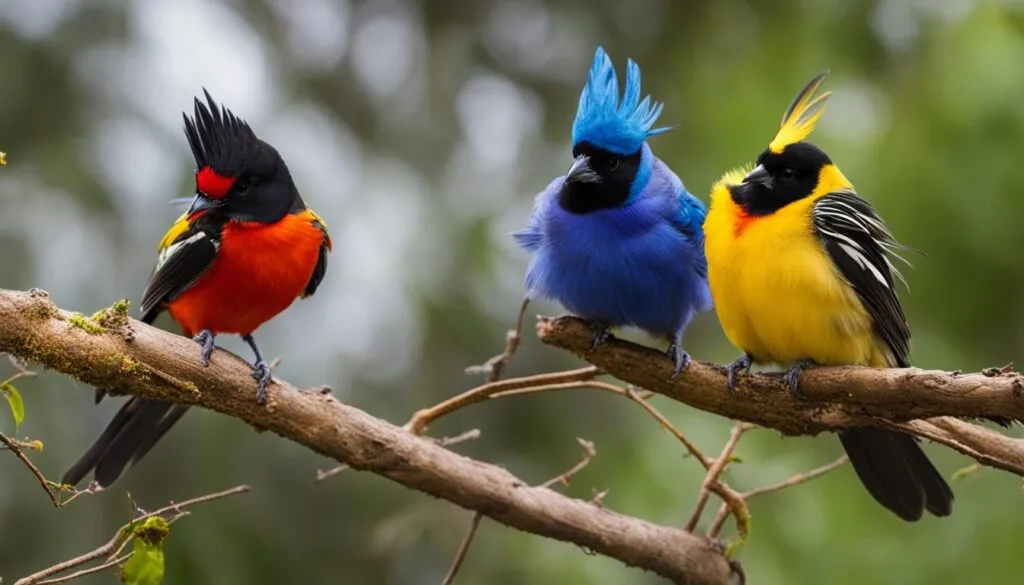
In addition to vocal and visual communication, some birds utilize chemical signals and tactile communication to convey messages and strengthen social bonds.
Chemical Signals
Certain bird species release scents or chemical substances to communicate with each other. These chemical signals can serve various purposes, such as marking territories, attracting mates, or signaling danger. By detecting these chemical cues, birds can gather important information about their environment and the presence of other birds.
Tactile Communication
Some birds engage in tactile communication, using physical contact to convey messages. This can involve mutual grooming, where birds remove dirt, parasites, or debris from each other’s feathers. Grooming not only helps maintain hygiene but also strengthens social bonds within pairs or flocks. Birds may also rub their beaks together, a behavior known as “billing,” which is often observed during courtship and pair bonding.
Both chemical signals and tactile communication play significant roles in bird behavior and can enhance their ability to communicate effectively within their social groups.
| Form of Bird Communication | Examples |
|---|---|
| Chemical Signals | Releasing scents to mark territories |
| Attracting mates through chemical cues | |
| Signaling the presence of danger | |
| Tactile Communication | Mutual grooming to strengthen social bonds |
| Leaning beaks together (“billing”) during courtship |
“Chemical signals and tactile communication are important forms of bird communication, facilitating social interactions and bonding within avian communities.”
The Importance of Understanding Bird Behavior
Understanding bird behavior is essential for establishing and maintaining a successful relationship with a pet bird. By interpreting their vocalizations, body language, and actions, bird owners can better understand their needs, emotions, and desires. Positive reinforcement training based on understanding bird behavior can enhance the bond between human and bird.
Bird behavior is a complex subject that encompasses various aspects of their lives, including communication, social interactions, and survival strategies. When bird owners take the time to observe and interpret their pet’s behavior, they can provide an enriched environment that meets their specific needs.
Interpreting Vocalizations
Bird vocalizations are an important form of communication that convey a range of meanings. Understanding the different types of vocalizations can help bird owners identify when their pet is happy, scared, hungry, or in need of attention. For example, a cheerful song may indicate contentment, while repeated squawking could be a sign of distress or frustration.
“Bird vocalizations are like a language. Each species has its own unique repertoire of sounds that it uses to communicate with others.”
Decoding Body Language
Just like humans, birds use body language to express their emotions and intentions. By paying close attention to their posture, movements, and gestures, bird owners can gain insights into their pet’s current state of mind. For instance, puffed-up feathers and an upright stance often indicate alertness or aggression, while relaxed feathers and a lowered head could signify calmness or submission.
Applying Positive Reinforcement
Positive reinforcement is a training method that focuses on rewarding desired behaviors. By understanding bird behavior and using positive reinforcement techniques, bird owners can encourage their pets to exhibit desirable actions and discourage unwanted behaviors. This form of training strengthens the bond between the bird and its owner, as it is based on trust, respect, and communication.
Positive reinforcement can be used in various situations, such as teaching a bird to step onto a hand, perform tricks, or stay quiet during specific times. By rewarding the bird with treats, praise, or playtime when it displays the desired behavior, the owner reinforces positive associations and motivates the bird to continue behaving appropriately.
Understanding bird behavior is a continuous learning process, as each bird has its own unique personality and preferences. By investing time and effort in understanding their pet’s behavior, bird owners can build a strong foundation for a fulfilling and harmonious relationship with their feathered companion.
Interpreting Bird Behavior and Vocalizations
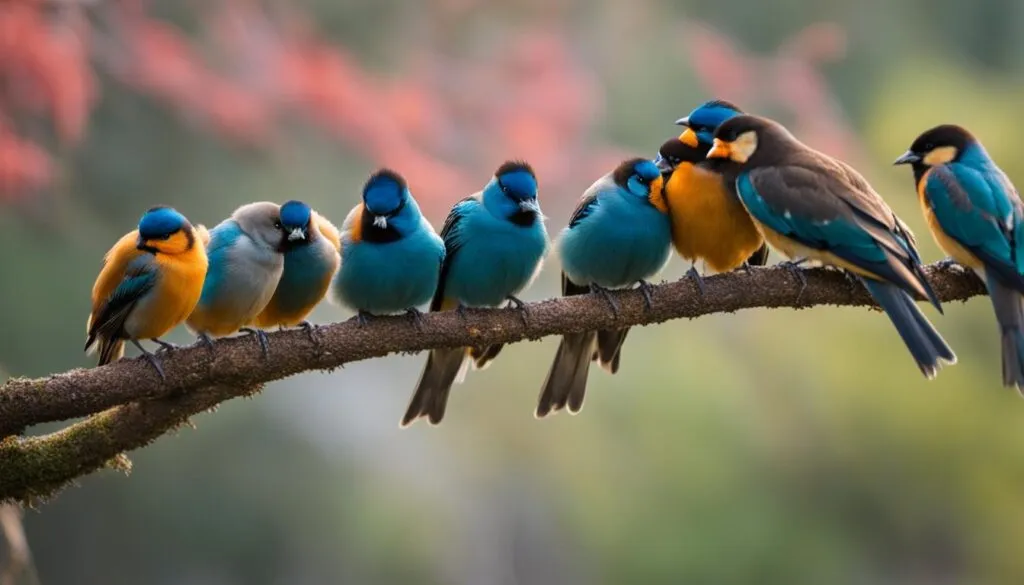
Interpreting bird behavior is a fascinating endeavor that allows us to delve into the world of avian communication. By observing their body language, vocalizations, and interactions, we can gain valuable insights into their emotions, needs, and intentions.
Birds express a wide range of behaviors and sounds, each conveying a specific message. By understanding the nuances of their behavior, we can better respond to their needs and develop a deeper connection with our feathered friends.
Understanding Body Language
Body language forms a significant part of bird behavior interpretation. Paying attention to their posture, wing position, and tail movements can provide valuable clues about their state of mind. For example, an upright posture with feathers fluffed up may indicate contentment and relaxation, while a crouched posture with flattened feathers might suggest fear or unease.
Birds also use their beaks and eyes to communicate. A raised crest or dilated pupils can signal alertness or aggression, while a relaxed beak and blinking eyes indicate a sense of calm and trust.
Decoding Vocalizations
One of the most prominent forms of bird communication is vocalization. Birds use a diverse repertoire of sounds, from melodic songs to sharp calls, to convey messages to other birds and their human companions.
Interpreting bird vocalizations involves considering the tone, pitch, rhythm, and sequence of sounds. For instance, a soft, melodious song can indicate contentment, while a loud and repetitive call might suggest territorial defense or an attempt to attract a mate.
“Birds have their own language, and by listening and observing, we can bridge the communication gap and gain a deeper understanding of their world.”
Reading Interactions
Observing bird interactions within their social groups can provide valuable insights into their behavior. Pay attention to how birds interact with each other, whether it’s a courtship dance, flocking behavior, or territorial disputes. These interactions can give us a glimpse into their hierarchy, bonding patterns, and cooperation.
By combining the observation of body language, vocalizations, and interactions, we can begin to piece together a comprehensive understanding of a bird’s behavior and its unique personality.
Learning to interpret bird behavior is a lifelong journey that rewards both bird enthusiasts and pet owners alike. By understanding their body language, vocalizations, and interactions, we can provide the best care, nurture strong relationships, and enrich their lives.
Conclusion
Understanding bird behavior and communication is of utmost importance for scientists, bird enthusiasts, and pet bird owners alike. By delving into the world of bird vocalizations, body language, and social interactions, we can unlock valuable insights into their survival strategies and their crucial role within the natural world.
Studying and interpreting bird behavior allows us to appreciate the complex social dynamics and communication systems that birds employ. Whether it is the melodious songs that serenade us at dawn, the intricate displays of feathers and postures during courtship rituals, or the alert calls that warn of potential danger, each aspect provides a window into the fascinating world of these avian creatures.
By embracing and respecting bird behavior, we can develop a deeper appreciation for their existence and contribute to their conservation. Only through a comprehensive understanding of their behavior and communication can we truly ensure the well-being of both wild and captive birds. So let us continue to marvel at their beauty, listen to their songs with wonder, and cherish the unique bond we share with these incredible beings of the sky.
FAQ
Why is studying bird communication important?
Studying bird communication allows scientists to understand how birds survive, interact, and form social bonds. It helps us protect and conserve bird populations and their ecosystems.
What are the different types of bird communication?
Birds communicate through vocal, visual, and chemical signals. Vocal communication includes songs and calls, while visual communication involves body language and displays. Some birds also use chemical signals to communicate.
How do birds learn their vocalizations?
Birds learn their vocalizations through a combination of genetic predisposition and imitation of adult birds. Each species has its own unique repertoire of sounds.
How do birds use visual communication?
Birds use their plumage, body language, and display behaviors to communicate with potential mates and rivals. Visual communication is an important component of courtship rituals and territorial displays.
Do birds use chemical signals to communicate?
Yes, some birds use chemical signals to convey messages. Certain species release scents, while others engage in tactile communication through mutual grooming or beak rubbing.
How can understanding bird behavior benefit pet bird owners?
Understanding bird behavior allows pet bird owners to better understand their needs, emotions, and desires. It helps strengthen the bond between humans and birds through positive reinforcement training.
How can I interpret bird behavior and vocalizations?
Interpreting bird behavior involves observing and understanding their body language, vocalizations, and interactions. Different behaviors and sounds can indicate various emotions or needs of the bird.
Why is understanding bird behavior important?
Understanding bird behavior is crucial for scientists, bird enthusiasts, and pet bird owners. It provides insights into their social interactions, survival strategies, and role in the natural world.

